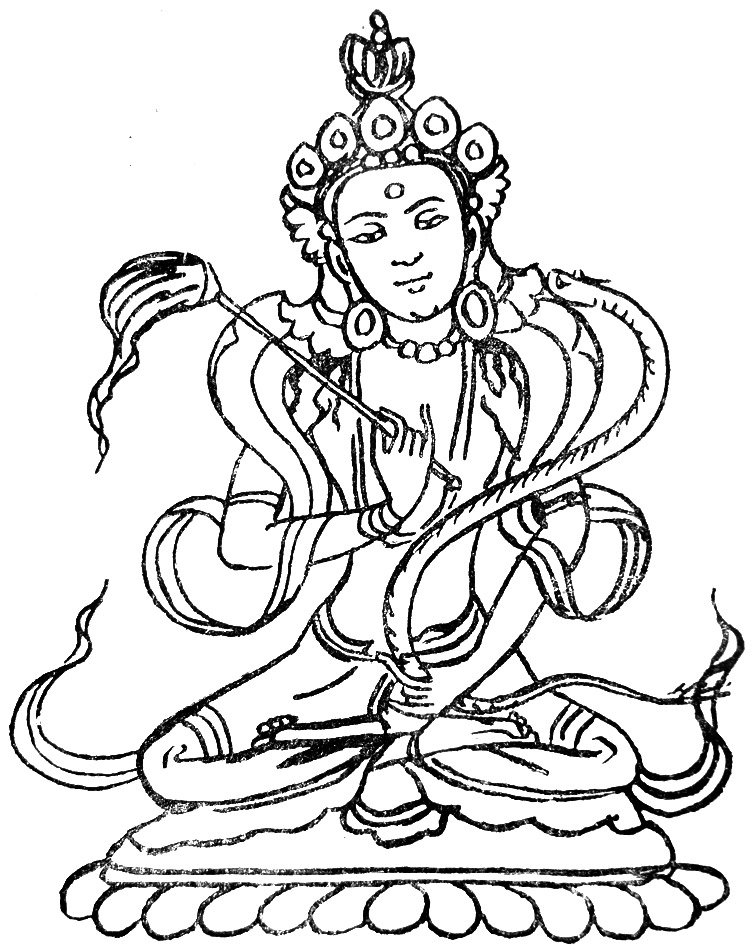The Indian Buddhist Iconography
by Benoytosh Bhattachacharyya | 1958 | 51,392 words | ISBN-10: 8173053138 | ISBN-13: 9788173053139
This page contains an iconography image of Emanations of Akshobhya: Janguli (snake-bite Goddess) and represents figure 137 of the book Indian Buddhist Iconography, based on extracts of the Sadhanamala English translation. These plates and illustrations represent either photographs of sculptures or line-drawing reproductions of paintings or other representations of Buddhist artwork.
Figure 137 - Emanations of Akṣobhya: Jāṅgulī (snake-bite Goddess)

Figure 137: Jāṅgulī
Jāṅgulī is widely worshipped amongst the Buddhists as a goddess who cures snake-bite and even prevents it. According to a Saṅgīti in the Sādhanamālā she is as old as Buddha himself, and the secret of Jāṅgulī and the mantra for her worship are said to have been imparted to Ānanda by Lord Buddha. Besides, the Saṅgīti, four Sādhanas describe the procedure of her worship and give elaborate mantras for the extraction of poison from the body of the snake-bitten. These four Sādhanas describe three entirely different forms of Jāṅgulī, two with one face and four arms and one with three faces and six arms. Images of Jāṅgulī are found in Tibet and China.
In two Sādhanas Jāṅgulī is described as having one face and four arms. In both cases she is alike in all respects except for the weapons she carries in her hands.
In a second Sādhana Jāṅgulī is said to exhibit the Varada mudrā in the second right hand. Fig. 137 illustrates a Nepalese drawing of the two-armed form of Jāṅgulī.
